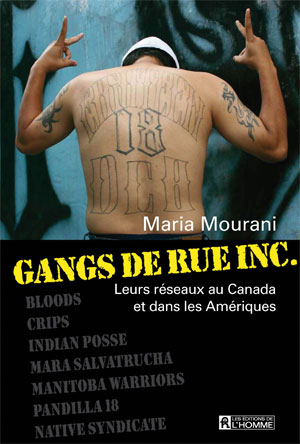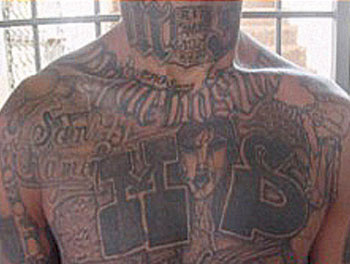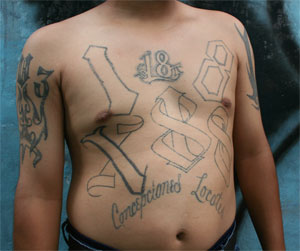Trained as a criminologist and a sociologist, Maria Mourani, a Montreal Member of Parliament (MP) with a special interest in street gangs in
But when she delved into the universe of the
Through contacts, Mourani was able to meet with members of two rival gangs in
She calls these gangs “by far the most violent and most dangerous gangs in the world.”
In her newly-published book released in French, Gangs de rue Inc. (Street Gangs Inc), Mourani describes her foray in 2008 into
She was shocked by what she found: cruel and violent initiation rites, young pregnant women proudly displaying the MS13 tattoos, children learning hand signals and a drive by gangs to “export” their “sub-culture” of violence wherever it gains a foothold.
The MP says her interest in
As the MS13 is spreading in several Canadian provinces, Mourani is concerned the same patterns of violence that are prevalent in
“I was told
The MS13 is already established in
Beyond
With that background, Mourani felt it was important to understand how Central American gangs operate and think.

[Cover image courtesy of Maria Mourani]
An Inside Look
Membership in the MS13, she observed, is usually voluntary and demands undying loyalty to the gang hasta la muerte (until they die) unless a member obtains el pase, a special permission to leave. They then have more or less the status of a “war veteran” who gets to keep his medals but doesn’t kill anymore, says the author.
Through interviews in the tough
In these barrios, gang mentality is invasive. Mourani saw a lot of children, some as young as three or four years old with gang tattoos or harboring the colors of the gang. They absorb the culture of violence, witnessing drugs, prostitution and arms deals. Recruitment starts in the cradle, says the Montreal Member of Parliament. Kids are born into the Mara and rarely escape that reality. If the two parents are members of the MS13, a child can automatically become a member without going through tough initiation rites. If one of the parents is not a member, the child will have to prove himself by going through the rites.
Aspiring members to Central American gangs must first pass violent initiation rites: beatings for 13 seconds for the MS13 and for 18 seconds for the Pandilla 18. Often, she says, the perpetrators “forget to count.” Women have the choice of being beaten or gang-raped. Another step is to kill a rival gang member or someone arbitrarily chosen.
Out of loyalty to the gang, orders must be carried out with no questions asked. If a MS13 member in
“There’s nowhere to hide,” says Mourani.
That level of loyalty sets the Central American bands apart from other gangs she’s researched in
“It’s an unquestioning loyalty. In this gang, death is inevitable, contrary to other street gangs where loyalty is serious business but there’s more latitude. It’s not the same, really not the same. What is interesting is that their subculture promotes the gang. The gang comes first, then the individual. In a lot of North American gangs, it’s often the individual that comes first. If someone can make money off the gang, they will.”
Canada
The exception, she says, is some
In
In Canada, she writes, the situation is not as “alarming” as it is in Central America but strong medicine is needed to fight this scourge from the South, she argues.
Mourani advocates a coordinated national strategy to fight gangs in
*Huguette Young is an AmericasQuarterly.org contributing blogger based in

[Images courtesy of Maria Mourani]






